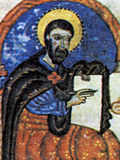.mw-parser-output .hidden-begin{box-sizing:border-box;width:100%;padding:5px;border:none;font-size:95%}.mw-parser-output .hidden-title{font-weight:bold;line-height:1.6;text-align:left}.mw-parser-output .hidden-content{text-align:left}You can help expand this article with text translated from
the corresponding article in Armenian. (March 2020) Click [show] for important translation instructions.
View a machine-translated version of the Armenian article.
Machine translation, like
DeepL or
Google Translate, is a useful starting point for translations, but translators must revise errors as necessary and confirm that the translation is accurate, rather than simply copy-pasting machine-translated text into the English Wikipedia.
Do not translate text that appears unreliable or low-quality. If possible, verify the text with references provided in the foreign-language article.
You must provide
copyright attribution in the
edit summary accompanying your translation by providing an
interlanguage link to the source of your translation. A model attribution edit summary is Content in this edit is translated from the existing Armenian Wikipedia article at [[:hy:Մովսես Կաղանկատվացի]]; see its history for attribution.
You should also add the template ((Translated|hy|Մովսես Կաղանկատվացի)) to the
talk page.
For more guidance, see
Wikipedia:Translation.
Movses Kaghankatvatsi (Old Armenian: Մովսէս Կաղանկատուացի Movsēs Kałankatuac῾i), or Movses Daskhurantsi (Մովսէս Դասխուրանցի Movsēs Dasxuranc῾i), is the reputed author (or the alias of several authors) of a tenth-century Classical Armenian historical work on Caucasian Albania and the eastern provinces of Armenia, known as The History of the Country of Albania (Պատմութիւն Աղուանից Աշխարհի, Patmutʿiwn Ałuanicʿ Ašxarhi).[1][2][3][4]
Authorship
The first historian to mention Movses' work was the medieval Armenian legal scholar Mkhitar Gosh, referring to him as "Movses Daskhurantsi."[5]
A later historian, Kirakos Gandzaketsi, referred to a statement in the History itself, to attribute the name of the author as Movses Kaghankatvatsi. The statement in question (Book II, ch. 11) says:
When the enemy became aware of what had happened, they pursued them and overtook a group of them at the foot of the mountain opposite the large village of Kaghankatuik, which is in the same province of Uti where I too am from.
Movses narrates the Khazar invasion of Transcaucasia and other events up to the seventh century in Book I and II of his History. Book III of his History differs from the previous ones in style of writing[6] and date. It deals with the Caspian expeditions of the Rus' and their conquest of Partav in the tenth century.
Because of such time lapse and difference in style, attribution of the work to a single author seems doubtful. For this reason it has been common to assume two consecutive authors or editors,
Kaghankatvatsi (7th century) as the author of Books I and II, and Daskhurantsi (tenth century) as the editors of Kaghankatvatsi's text and the author of Book III.[5]
